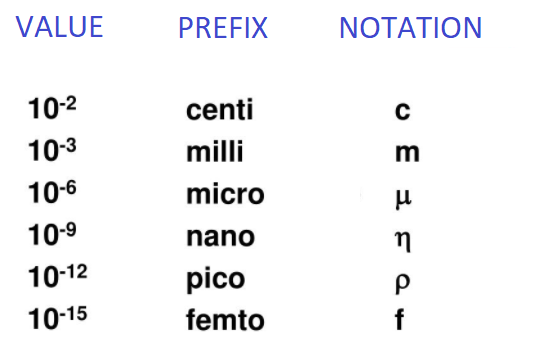Question
Question: \( 1\mu \) is (A) \( {10^{ - 6}}m \) (B) \( {10^{ - 9}}m \) (C) \( {10^{ - 10}}m \) (D) \...
1μ is
(A) 10−6m
(B) 10−9m
(C) 10−10m
(D) 10−3m
Solution
To measure the quantities we define a unit for them. Meter is a unit of length. We use scientific notations to write very small or very large numbers. Scientific notation is used when a number between 1 to 10 is multiplied by a power of 10 . Here, we will discuss these scientific notations, particularly, metric prefixes. They make calculations easy and error-free.
Complete answer:
We have a whole table of standard notations shown below in the picture.

A metric prefix is a unit that precedes a basic unit of measurement to indicate a multiple of the unit. All the metric prefixes used are decadic and each prefix has a unique symbol. They are very helpful, to write very large and very small measurements.
From the table, we can see that 1μ is a metric prefix 10−6 .
Hence, the correct option is (A) 10−6m .
Note:
Very common metric prefixes are centi (c) , milli (m) , micro (μ) , nano (n) , pico (p) , Giga (G) , mega (M) , kilo (k) , hecto (h) .
A metric prefix is always followed by a SI unit.
To write the numbers in scientific notation, there are some rules.
-It is always written in base 10 and the power of 10 carries either positive or negative signs.
-The value of the coefficient is (either positive or negative) of 10 is less than 10 and equal to or greater than 1 .
-When we move the decimal to the left the power of 10 increases. Similarly, when we move the decimal to the right, the power of 10 decreases.
